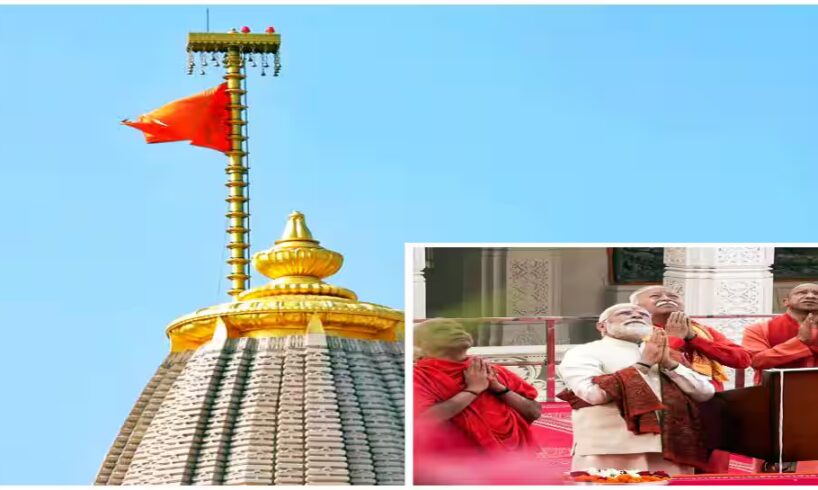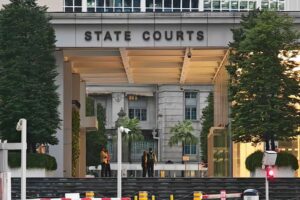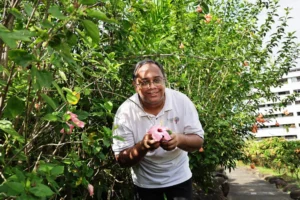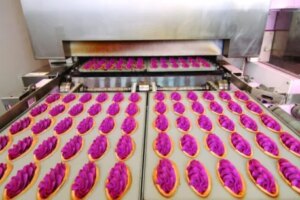
Lucknow (Uttar Pradesh): Ayodhya witnessed a historic moment on November 25, when Prime Minister Narendra Modi hoisted a ceremonial flag over the sanctum of the Ram Temple. The moment had emotional weight for many devotees because it coincided with Vivah Panchami, a date cherished in tradition as the day Lord Ram and Sita were married in the Treta Yuga (a mythological era).
Before the event, Nripendra Mishra, who heads the Shri Ram Janmabhoomi Temple Construction Committee, told the media, “The flag hoisting is not merely a celebration. It is an announcement that the temple construction has been completed. The Lord is now seated in His abode. This flag will carry a message to millions of Ram devotees around the world that Ram Lalla’s grand temple stands ready in its full form.”
PM Modi had earlier performed the groundbreaking ceremony on August 5, 2020 and also attended the Pran Pratishtha on January 22, 2024. This week, he posted on X that he would witness “the historic moment” of the saffron flag rising above the sacred spire around noon on Tuesday (November 25).
Add Zee News as a Preferred Source
Flag With A Legacy
Mithilesh Nandini Sharan, the chief priest at Ayodhya’s Hanumat Nivas Temple, explained the cultural roots: “The Raghuvansh has held the flag tradition for ages. For the lineage of Lord Ram, the symbol of the Kovidar tree has always been recognised as the flag. The same heritage has been carried into the new tradition as well.”
He highlighted that the flagpole had already been installed, but the colour of the flag had not been officially confirmed, though saffron was almost certain.
The new temple flag rises to a total height of 191 feet, with the main shikhara (spire above the sanctum) itself measuring 161 feet. “This flag carries the symbol of Surya Dev and the mark of the Kovidar,” Sharan said.
According to Economic Times, the flag measures 22 feet in length and 11 feet in width, weighing between 2 to 3 kilograms. It has been designed to match the proportions of the shikhara and the 42-foot flagpole. A 360-degree ball-bearing chamber allows the flag to move smoothly with the wind.
Sharan detailed the symbolism, “Kapi Dhwaj is his (Ram’s) flag, Kovidar Dhwaj is his flag, Garuda Dhwaj is his flag and Baan Dhwaj is his flag. Among all of these, Ram’s ancestral flag has always been the Kovidar flag.”
Seven craftsmen stitched the flag entirely by hand over 25 days. The cloth is made from aviation-grade parachute nylon blended with silk satin threads woven into it. The material allows the flag to withstand intense sunlight, heavy rain and humidity. Every component is sourced within India, and the flag features a three-layer structure.
Crowds Flock To Historic Ceremony
Nearly 100 tonnes of flowers were used for the event. Estimates suggest that around 6,000 to 7,000 people participated in the event. Donors who contributed to the temple’s construction were invited, with the organisers ensuring representation from every social group.
The ceremonies began at the Sapt Rishi Temple with prayers and special Vedic rituals. The aarti (light offering) inside the temple complex took place in the section where the Ram family is seated.
Trust officials say that most of the major construction work inside the temple premises is nearly complete. Some technical work, however, will continue until December 2025.
Out of the temple’s 71-acre complex, 70 percent has been covered with plantations. Trees mentioned in the Ramayana, such as Ashok, Kadamba and Parijat, have been planted based on research.





